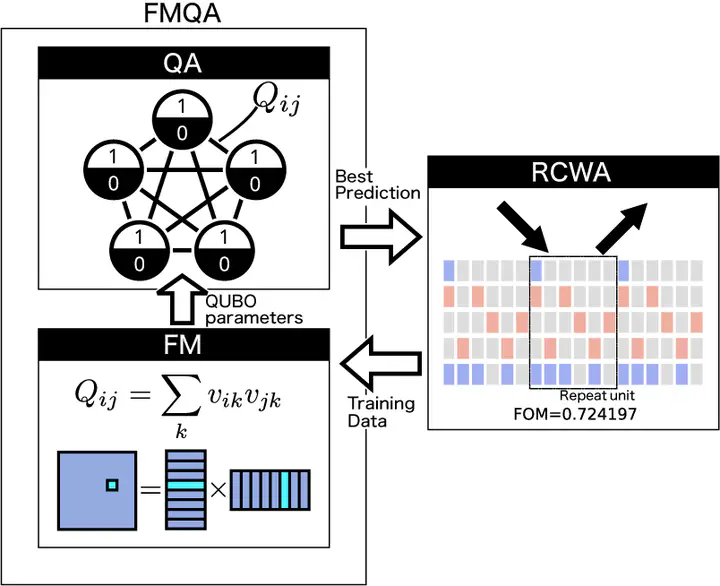
Abstract
Complexity of materials designed by machine learning is currently limited by the inefficiency of classical computers. We show how quantum annealing can be incorporated into automated materials discovery and conduct a proof-of-principle study on designing complex thermofunctional metamaterials consisting of SiO2, SiC, and Poly(methyl methacrylate). Empirical computing time of our quantum-classical hybrid algorithm involving a factorization machine, a rigorous coupled wave analysis, and a D-Wave 2000Q quantum annealer was insensitive to the problem size, while a classical counterpart experienced rapid increase. Our method was used to design complex structures of wavelength selective radiators showing much better concordance with the thermal atmospheric transparency window in comparison to existing human-designed alternatives. Our result shows that quantum annealing provides scientists gigantic computational power that may change how materials are designed.